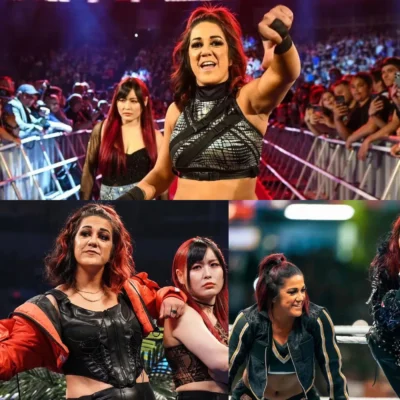

Miley Cyrus Explains Her Super Unique Voice Disorder and Why She Won’t Fix It
Miley Cyrus has always been a boundary-breaking artist. From her early days as the bubbly Disney Channel star of Hannah Montana to her evolution into a fearless pop rock icon, Miley’s voice has been one of her most defining features. But behind that gravelly, soulful tone lies something many don’t realize: a vocal disorder that affects her singing. And even more surprising is her decision to embrace this condition rather than seek to fix it.

This revelation has sparked widespread conversation among fans, music critics, and vocal experts. It challenges our ideas about perfection in music and raises questions about what it means to be authentic in today’s heavily produced industry. Let’s dive deep into Miley’s vocal disorder, why she refuses treatment, and what this means for her career and fans worldwide.
What Exactly Is Miley Cyrus’s Vocal Disorder?
Miley Cyrus has been open about having vocal cord damage and nodules, a condition often caused by strain or misuse of the vocal cords over time. These nodules are small, benign growths that develop on the vocal folds, similar to calluses on your skin. They cause the voice to sound hoarse, raspy, or breathy — traits that are unmistakably part of Miley’s vocal signature.
The nodules are a result of years of powerful singing, extensive touring, and sometimes vocal strain that even top singers face. They can cause discomfort, reduce vocal range, and make singing more challenging. Most singers diagnosed with nodules face a tough choice: rest and therapy or surgery to remove them, often risking the natural tone of their voice.
Why Miley Chooses Not to Fix It — Embracing Her ‘Super Unique’ Voice
What sets Miley apart is her unapologetic decision not to “fix” her voice, despite medical advice. She’s made it clear that her vocal disorder contributes to her “super unique” sound, a sound that feels genuine and emotionally raw.
In an interview, Miley expressed that this imperfection is a part of her identity as an artist. She refuses to conform to a sanitized pop ideal where voices are airbrushed and processed to sound flawless. Instead, she’s embracing the very thing that makes her voice distinctive, owning her flaws rather than hiding them.
This decision isn’t just about music; it’s a bold cultural statement. It pushes back against the music industry’s obsession with perfection and celebrates individuality, resilience, and authenticity. For Miley, her voice — nodules and all — is a form of self-expression and rebellion.
The Industry’s Pressure vs. Miley’s Bold Stance
In today’s music landscape, perfection is often manufactured. Auto-tune, vocal processing, and image crafting are the norm. Artists are frequently pressured to maintain a flawless image, including their voices. The industry rewards polish and commercial viability, sometimes at the expense of artistic authenticity.
Miley’s choice to keep her imperfect voice is a middle finger to that pressure. It’s a controversial stance, especially given vocal nodules can worsen without treatment, potentially threatening her long-term career. Many vocal coaches and medical professionals caution that singing with untreated nodules can cause irreversible damage.
Still, Miley’s fans see her as a role model for embracing imperfections and pushing against unrealistic standards. Her voice’s rawness connects deeply with listeners who crave honesty and emotional truth in music.
How Miley’s Vocal Disorder Influences Her Music Style
The impact of Miley’s vocal condition is clear in her music. Her raspy tone adds an emotional grit and intensity that few pop stars can replicate. Whether it’s the rock-infused anthems on her Plastic Hearts album or the heartfelt ballads she delivers, that unique voice texture adds authenticity.
This gritty vocal quality helps Miley stand apart in a crowded pop scene dominated by smooth, digitally perfected voices. It allows her to cross genres — from country to rock to pop — with a signature sound that’s unmistakably hers.
Miley’s vocal disorder has thus become an artistic asset, a sound that reflects vulnerability, strength, and raw emotion all at once.

Fan Reactions: Mixed But Mostly Supportive
Fans on Facebook and other social media platforms have been largely supportive of Miley’s vocal condition and her decision to embrace it. Many admire her courage to be transparent and vulnerable, especially in an industry where image often trumps honesty.
Comments flood in praising Miley for being a beacon of authenticity. Many share personal stories of how Miley’s music helped them accept their own imperfections. Her voice has become a symbol of empowerment — proof that flaws can be strengths.
That said, some fans express concern over her vocal health, hoping she considers treatment before permanent damage occurs. This mix of support and worry fuels ongoing conversations and keeps Miley’s vocal journey relevant.
The Bigger Picture: What Miley’s Story Means for All of Us
Miley Cyrus’s vocal disorder and her refusal to “fix” it extend beyond music. It’s a powerful metaphor for embracing imperfection in life. In a culture obsessed with flawless images on social media and unrealistic standards, Miley’s message is refreshing:
You don’t have to be perfect to be worthy, successful, or loved. Your imperfections can be your superpower.
This message resonates far beyond the music world, encouraging people to accept themselves fully and stand strong against societal pressure to conform.
The Science Behind Vocal Nodules and the Risks of Ignoring Them
For those curious about the medical side, vocal nodules are caused by repetitive vocal abuse — screaming, shouting, intense singing without proper technique, or strain. Nodules cause thickening and swelling of the vocal folds, which impacts vibration and sound quality.
Ignoring vocal nodules can lead to:
Permanent scarring of vocal cords
Loss of vocal range
Chronic hoarseness or voice fatigue
Increased risk of vocal hemorrhage
Most singers with nodules undergo voice therapy, rest, or surgery to remove them. Miley’s choice to continue singing through the nodules is bold but risky, making her story all the more compelling and controversial.
Miley’s Voice and the Culture of Realness in 2024
As authenticity becomes a cultural currency, Miley’s vocal condition fits right into this era’s craving for realness. Fans want artists who are not afraid to show their human side — struggles, scars, and all.
Her decision aligns perfectly with a generation tired of overly produced, “fake” content. Miley’s “super unique” voice symbolizes the shift toward celebrating what makes us different, encouraging people to find beauty in imperfection.
The Impact on Future Artists and the Music Industry
Miley’s open discussion about her vocal disorder and refusal to conform could inspire a new wave of artists to embrace their natural voices, imperfections, and vulnerabilities. This could reshape industry standards around vocal perfection, pushing for greater acceptance of diversity in sound.
It also forces industry insiders to reconsider how talent is nurtured and marketed. Authenticity, rather than polished perfection, might become the new gold standard — and Miley is leading that charge.
What’s Next for Miley Cyrus and Her Voice?
As Miley continues to make music and tour, her voice will remain a defining feature — one that tells a story of resilience, courage, and individuality. Whether she eventually chooses treatment or not, she’s already cemented her place as an icon who refused to let “imperfection” silence her.
Her fans eagerly await new music that will no doubt continue to showcase the raw power of her voice and her fearless spirit.

Final Thoughts: Miley Cyrus’s Voice Is More Than Just a Sound
Miley Cyrus’s vocal disorder and her refusal to “fix” it is a powerful narrative about embracing uniqueness and rejecting unrealistic standards of perfection. It challenges the music industry, inspires fans, and reminds us all that sometimes, what seems like a flaw can become your greatest strength.
Her voice is a rebel yell in a sea of conformity — gritty, raw, and unapologetically real. It’s the voice of a generation hungry for truth and authenticity.
So the next time you hear Miley sing, remember: her “super unique” voice isn’t broken. It’s brilliantly and boldly hers.


















